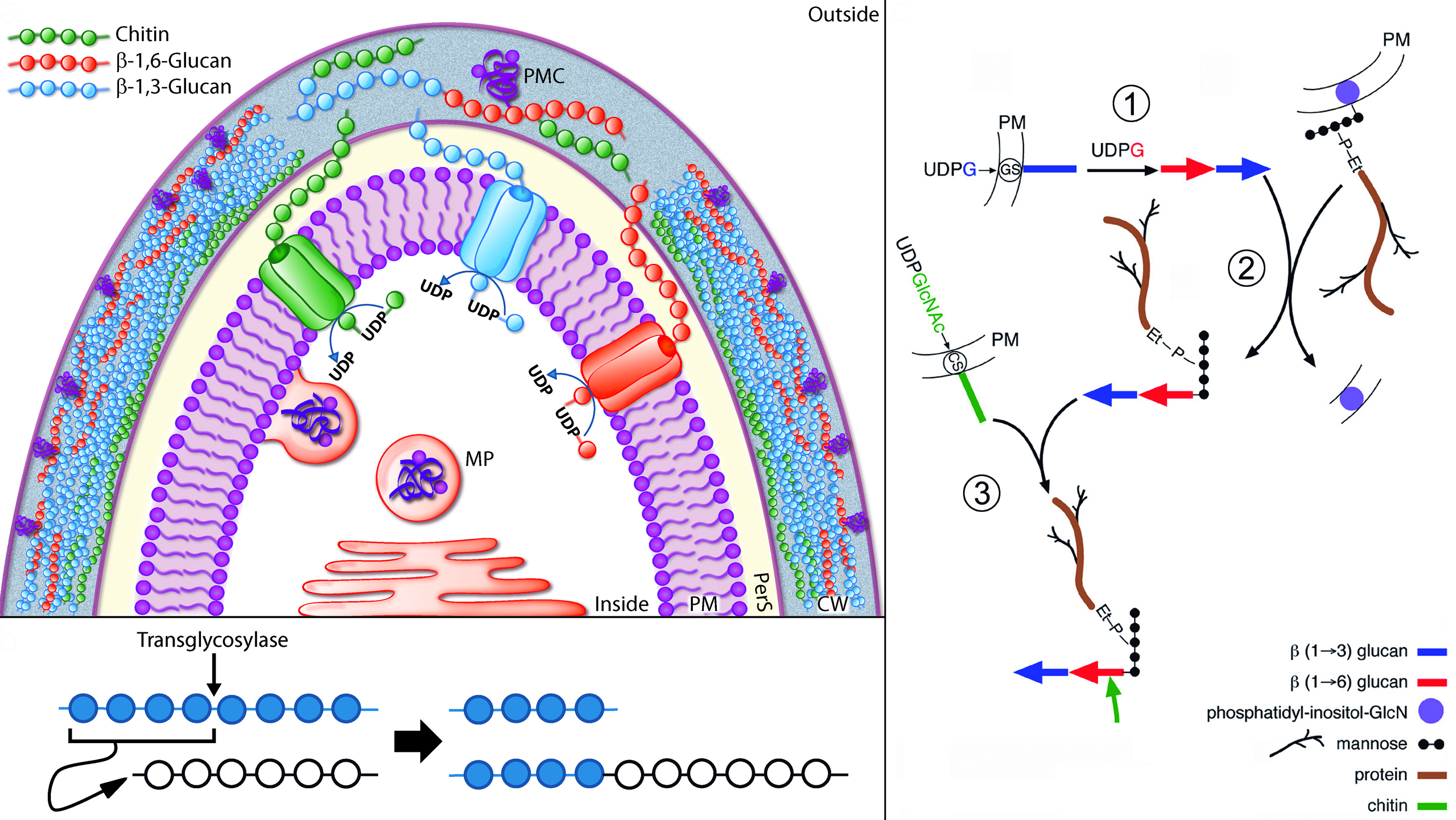- Portada
- Líneas de investigación / Research lines
- Remodelación de la pared celular / Cell wall remodelling
Remodelación de la pared celular / Cell wall remodelling
Caracterización de proteínas implicadas en la remodelación de la pared celular
En el contexto de una colaboración científica desarrollada en los últimos años con los grupos del Dr. Enrico Cabib (NIDDK, NIH, Bethesda, MA, USA) y Vladimir Farkas (Academy of Sciences, Slovakia), hemos identificado y caracterizado funcionalmente la primera familia de proteínas fúngicas implicadas en el “crosslinking” entre polisacáridos de la pared celular de S. cerevisiae, la familia Crh. A través su actividad transglicosilasa quitina-glucano, estas proteínas, Crh1 y Crh2, son responsables de la unión covalente de estos dos polímeros en la pared celular (Figura). El correcto funcionamiento de este entrecruzamiento es necesario, no solo para el mantenimiento de la integridad celular en condiciones de estrés, sino para un perfecto ensamblaje de los componentes de la pared celular a lo largo del ciclo y la morfogénesis de la levadura.
Actualmente, pretendemos profundizar en el estudio de estas proteínas mediante la cristalización y caracterización de su estructura tridimensional y estudios bioquímicos de sus actividades in vivo e in vitro. Además, pretendemos estudiar estas proteínas en otros organismos como Candida albicans y Aspergillus fumigatus. El hecho de que estas proteínas sean importantes para la integridad de la pared celular hace que otro de nuestros objetivos sea el desarrollo de screenings para la búsqueda de inhibidores de la actividad transglicosilasa de estas proteínas.

Characterization of proteins involved in cell wall remodeling
In the context of a scientific collaboration developed in recent years with the groups of Dr. Enrico Cabib (NIDDK, NIH, Bethesda, MA, USA) and Vladimir Farkas (Academy of Sciences, Slovakia), we identified and functionally characterized the first family fungal proteins involved in the "crosslinking" between cell wall polysaccharides of S. cerevisiae, CRH family. Through its chitin-glucan transglycosylase activity, these proteins (Crh1 and Crh2), are responsible for the covalent link between these two polymers at the cell wall (Figure). This crosslinking is necessary, not only for the maintenance of cell integrity under stress, but also for the correct assembly of cell wall components throughout the cycle and morphogenesis of the yeast.
Currently, we intend to further study these proteins by crystallization and characterization of its three-dimensional structures and by biochemical studies of their in vivo and in vitro activities. In addition, we intend to study these proteins in other organisms such as Candida albicans and Aspergillus fumigatus. Since these proteins are important for the integrity of the cell wall another of our objectives is the development of screenings for finding inhibitors of the transglycosylase activity of these proteins.
